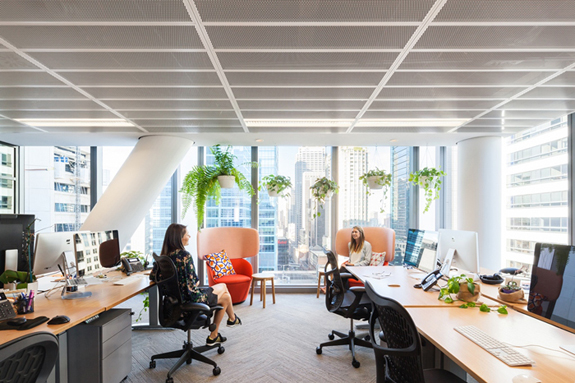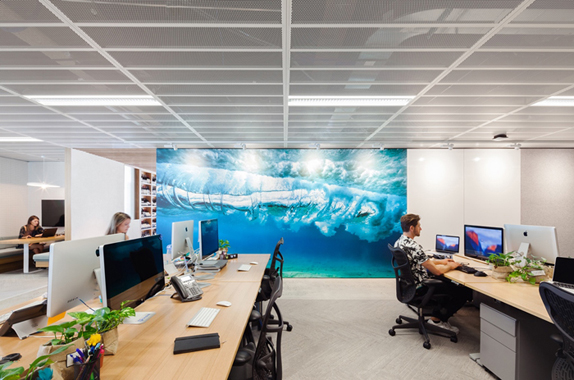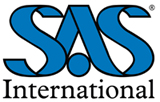Health, Wellbeing And The Metal Ceiling
By Paul Aubrey, Divisional Director at SAS International, North America
Occupant wellbeing, health and comfort are key design considerations when it comes to creating buildings and interiors for people to work in. Seeing as employees spend 39.2 hours a week on average in the workplace, it is crucial to design workspaces that
ensure employees feel comfortable, motivated and proud of where they work.
 |
Metal ceilings blend seamlessly into any modern office design.
|
To make these aspirations a reality, all angles need to be considered during the design stage. During this vital period, designers and technicians examine a building’s function and structure to help identify the relevant design requirements for
employees occupying that particular space.
Indoor Air Quality and Thermal Comfort
Keeping CO2 levels to a minimum makes for a healthier, more productive work environment. Without high air quality, employees are more likely to feel lethargic and demotivated. Moreover, in some cases, if the appropriate level of air quality
is not maintained, employees become more prone to illness and therefore require more time off work.
The right level of thermal comfort also needs to be determined so that everyone is comfortable throughout the space.
In terms of ceiling design, the trend is for open-plan, uncluttered ceiling spaces. For this reason, open-soffit has become popular as it hits the mark on visuals and function. Offering natural cooling, the concrete soffit absorbs heat over the course
of the day and is a more organic method to control thermal comfort as opposed to relying on mechanical systems which are costly to run.
Other ceiling design solutions designed to offer thermal comfort include chilled ceilings. These are efficient cooling systems maintaining a consistent, ambient temperature that evenly cools a room at a rate suitable for every employee in an occupied
room.
Lighting Levels
The lack of natural lighting in commercial office spaces is one of the highest causes of ‘sick building syndrome.’ Harsh lighting is known to cause eye discomfort and headaches; unavoidable ailments that leave employees unable to focus on
the job at hand.
One way to combat this is by maximizing natural daylight into spaces. This requires lighter color schemes and reflective surfaces, so that all light is evenly diffused and any natural light coming through the windows can be evenly shared. Adopting
this approach ensures employees are exposed to natural light whilst at work, so they feel more productive and comfortable in their workspace. The challenge remains how to reflect natural light when darker colors are a design requirement.
Noise and Acoustics
More and more designers want to create airier spaces which are characteristic of contemporary office design. For this reason, sound absorption is completely essential in populated, open-plan commercial office spaces. Whilst ambient sounds, such as white
noise, are known to increase productivity, too much noise can have a negative impact on employees’ concentration levels.
Although furniture can be installed to break the noise in these environments, typically these simply create more hard services for sound to reverberate.
 |
Light-colored metal ceiling systems help to spread diffused light throughout the work space.
|
With this in mind, the ceiling is the best place to absorb sound as it is an uninterrupted, expansive area. Depending on the requirements of each space, the ceiling can feature either rafts or baffles to absorb sound. Similar to a metal ceiling tile,
rafts are made from perforated metal and have mineral wool pads located behind them to absorb sound. The sound is transferred into heat energy - physical byproduct of the process. The same applies to baffles, except perforations are on both sides
and the pad lies in the center.
Considering 90% of an organization’s operating costs goes on salaries, shouldn’t employee wellbeing and happiness be a design priority? It goes without saying, that user comforts require careful planning and consideration to ensure all of
these areas complement one another effectively. Spaces must have color without too much darkness and must have sufficient objects to absorb sound without being too cluttered. Often it might seem an impossible task to create the best space for employees.
However, with delicate consideration during the design stage, ceilings are the ultimate solution which can control acoustics, maximize natural lighting and ensure ambient temperatures, creating the optimum working environment which ticks all the boxes.
About SAS International
 SAS International is a manufacturer of architectural metal ceiling systems. The company is headquartered in the UK and has offices throughout the world. To learn more, visit sasint.us.
SAS International is a manufacturer of architectural metal ceiling systems. The company is headquartered in the UK and has offices throughout the world. To learn more, visit sasint.us.